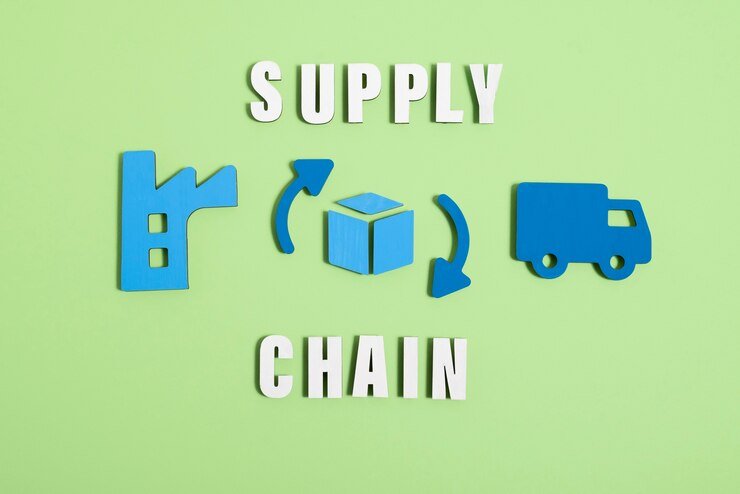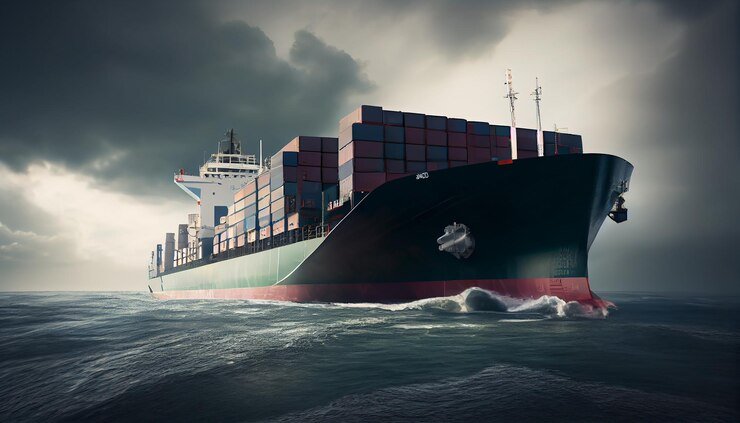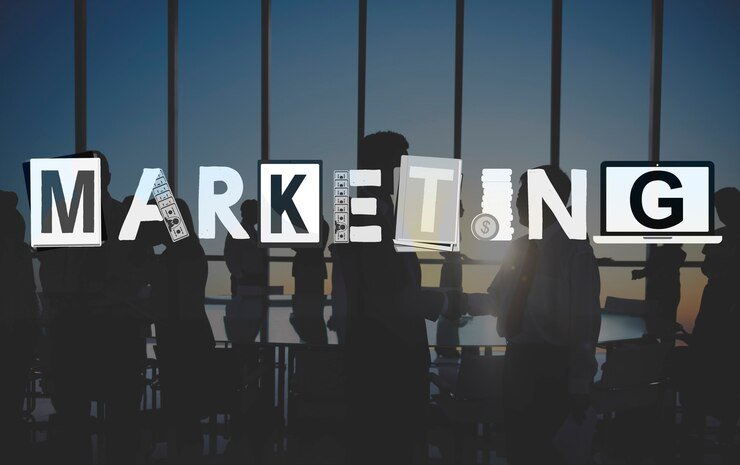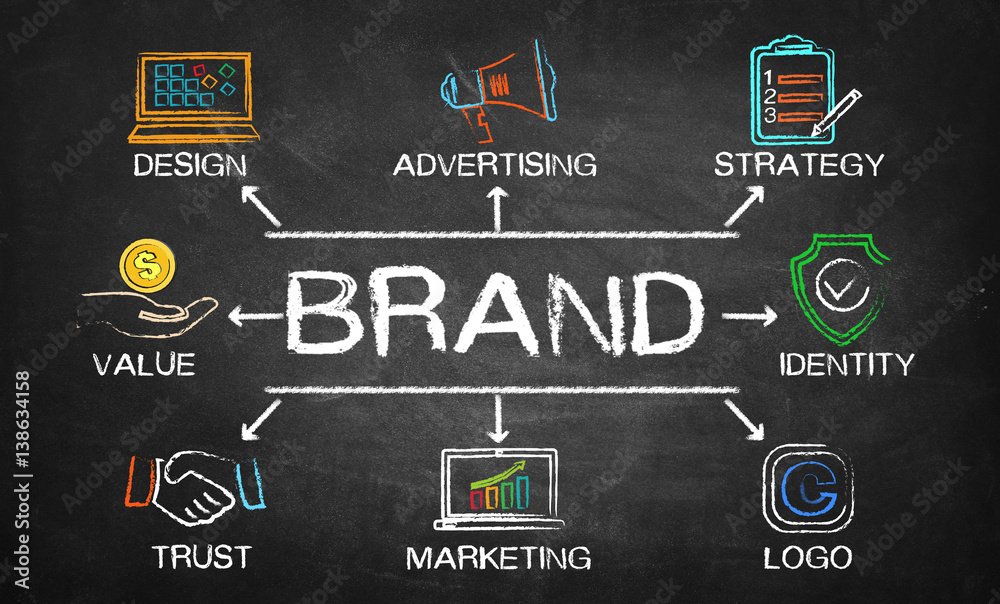
4.1 Introduction

This module is the third and final part of our analysis of supply
chain management and its importance within an operations management context. We have already explored the concepts of purchasing, inventory, product development and
production. In this module, we will move onto what happens after the finished good or service is
ready for distribution and, ultimately, purchase by the customer.
4.2 What is the distribution process?

A distributor is defined as someone who purchases and stores
products before selling them onward through a distribution channel, eventually to the
customer who will purchase them. Essentially, they are the step in between the manufacturer of a product and the retailer and, ultimately, the customer. It is for this reason that distributors usually work in collaborative and
ongoing partnerships with their clients, be they manufacturers or retailers.
Distribution itself is the process of making a product available for purchase by penetrating it in the
market. It incorporates a number of areas, including transportation, packaging and delivery. Failures in the
distribution process can have serious knock on effects on the effectiveness of a business's supply
chain. After all, a well thought out and cleverly designed product with a captive customer group
willing to buy it will come to nothing if there is a problem in getting the product in the right place at
the right time!
This is where distribution comes in - it ensures that the product is available at the right time and in
the right place for purchase. Channels of distribution There are four levels of distribution that are commonly used, each breaking down the different
channels that a product goes through to reach the final customer.
A brief description follows below:
Level 0 - This is the simplest channel of them all, where the manufacturer sells directly to the
customer, requiring no intermediary in the process
Level 1 - This channel adds in one intermediary, that of a distributor between manufacturer
and customer
Level 2 - This channel has two intermediaries, a distributor and a retailer. The best example is
that a manufacturer passes the product to a wholesaler, who sells to a retailer, who finally
sells to the customer
Level 3 - This is the most complex channel of the four, with three intermediaries, a distributor, retailer and an agent, before the final customer .
4.3 The Three Types of Distribution

The distribution strategy that you choose will very much depend
upon the type of product or service that you are manufacturing and selling. If you are working with a specialist distributor, they will be able to advise you on the best strategy to
get the most out of your distribution channel. There are three methods of distribution that detail
how manufacturers want their goods to be dispersed in the market.
Intensive Distribution
This means that the products will be available for purchase in as many sales outlets as possible. The
goal of intensive distribution is to penetrate as high a volume of the market as you can.
Selective Distribution
This approach means choosing specific outlets in a defined list of locations, usually based on a
particular product and how it will fit best in a certain environment. Doing this allows manufacturers
to pick a price point that targets a specific target market, offering a more customised shopping
experience to the customer. Selective distribution caps the number of locations in a particular area.
Exclusive Distribution
This method means selling in only a limited number of outlets. This approach is often the case for
luxury brands that are exclusive and not available to the mass market, or special or seasonal
collections available only in specific locations or stores. Doing this is a good way to maintain a
brand's image and product exclusivity. Designer fashion brands, such as Christian Dior, are a good example of companies who take this
approach.
Activity 1
Estimated time: 20 minutes
Take another look at the three types of distribution listed above - intensive, selective and exclusive. Research each type a little further and come up with a product or company that falls under each
category, writing a short paragraph on each one and why they may have chosen such an approach.
4.4 Individuals involved in the distribution channel

The chain of distribution can get confusing, as more people are
added into it. Distributors, wholesalers, retailers and agents all work as intermediaries in the distribution process, to a greater or lesser extent, depending upon the setup of your business and the type of product that
you are selling. Let's take a look at some of the key roles in a distribution channel.
Distributors
A distributor is a wholesaler who takes on extra duties. As well as fulfilling orders, they also actively
sell products on behalf of the manufacturers. Often, a distributor focuses on a particular area and
market, which allows them to cultivate strong relationships with manufacturers and also become
specialists in that particular area, adding great value to their clients with their knowledge. Unlike a
wholesaler, they usually have stronger and more lasting partnerships with the companies that they
work for.
Wholesalers
A wholesaler usually works as a middleman - taking and fulfilling orders from retailers and reselling
goods, often in high volumes, for manufacturers. Wholesalers often purchase in bulk from either
distributors or manufacturers, enabling them to keep margins tight and prices low. Unlike
distributors, wholesalers only deal with the storage and delivery of goods, but, in certain cases, you
have to go through a wholesaler to get access to a distributor.
Retailers
Retailers are the outlets where customers buy the products. Retailers purchase their products from
distributors or wholesalers. They often utilise a variety of selling channels, including online, in store, etc.
Brokers and Agents
Less common than other roles in the distribution channel, agents handle contracts, marketing and
more specialised shipments of products. A key part of their job is customer relationship management. On behalf of manufacturers, they take ownership of products through the distribution process. They
represent the producer in the sales process.
Take a Quick Recap Test
[viralQuiz id=17] .
4.5 Shipping and delivering your products

Don't underestimate the importance that shipping can make to the
sales of your product.
Choose the wrong shipping partner and your customers may suffer a poor experience. Don't plan out
your shipping strategy carefully in advance and you could lose serious money and you end up
unprofitable. There are several different strands to shipping and different factors to consider which can have a
significant impact on your customers, your revenue and your profitability. Let's take a look at the
key areas.
4.6 Packaging & Marketing

In today's modern, e-commerce focused commercial world, packaging serves two main purposes. The first is obvious - it is a practical means with which to ship your product between parties in the
distribution channel, ultimately to the customer themselves. Secondly and potentially less
understood, it is a way to maximise the shopping experience, build a brand identity and give
something extra to your customers.
First of all, let's consider the practicality aspect. The most common options for packaging are boxes and envelopes (padded or unpadded). For most businesses and products, you'll likely need to use some size of box to package your
products for shipping, as well as some form of stuffing or cushioning to protect the product inside
from damage as it is moved around.
Alternatively, if your products don't require protective padding, resealable bags are an increasingly
popular choice, as they are small and thin, often fitting through a standard letter box and allow you
to keep your shipping rates lower and minimise the disruption of failed deliveries for customers. On this note, a major factor to consider is cost. Most shipping options are charged based on size and
weight and you therefore should try to minimise this where possible, not only to keep your delivery
costs down, but also to reduce the amount you spend on the packaging materials themselves.
Moving away from the practicality and cost aspect, the packaging of your products can also afford
you the opportunity of adding a special touch to surprise your customers and reinforce your brand
identity. As more and more people make their purchases online, many customers are looking for shipping, packaging and presentation to all be part of the shopping experience.
Convenience and practicality are often taken as a given and the most competitive and savvy
companies recognise the need to add something different to the process.
This expectation means that for many businesses, competing effectively means going above and
beyond to impress customers and exceed their expectations, by delivering not only a product, but
also an experience.Gone are the days of boxy, plain packaging which is anonymous - instead, the
packaging and presentation of your product can be an interesting way to differentiate your product
from the competition.
A company who has used this strategy to great effect is Trunk Club, an American based service that
sends subscribers a fully personalised selection of men's clothes and accessories every month, based
on their preferences and previous choices. Packaging is a big part of the experience from a customer's perspective - there is an element of
surprise about what will be in the box and therefore, Trunk Cub make sure that an elaborate and
suspenseful unwrapping of the box and contents is very central to their overall brand experience. Trunk Club is so famous for its packaging that customers have even been known to make videos on
YouTube of themselves unwrapping the boxes, which furthers amplifies Trunk Club's brand identity
through word of mouth marketing.
4.7 Deciding on delivery options for customers

One of the first steps of your shipping strategy needs to be your
approach to charging your customers. Poorly thought out decisions here can have a direct impact on your bottom line, but are often viewed
as inconsequential.
Here are some common methods of charging for delivery:-
Flat rate delivery
You could consider offering a flat rate of delivery for all products in your line. By far the most
important consideration if you choose to use this approach is making sure that you do not either
under or overcharge the customer too much, which can sometimes be a tricky balance to achieve.
Flat rate shipping usually works best when you have a fairly standard product line of similar size and
weight products. If you sell many different products of differing weights and sizes, you may find that
flat rate shipping is a little too fiddly and that your customers find it unfair if they are purchasing a
small product, but are being charged a higher rate of delivery.
Offer free delivery
Offering your customers free delivery is becoming an increasingly popular option and there is some
evidence that it is very attractive to customers, who are often deterred at having to add on a
separate shipping cost to the price of the product they are purchasing at the basket stage. Here are a few ways in which to make free shipping work as an option for your business:
Increase the price of the product to account for shipping costs (the customer pays the cost)
The business pays the full price of shipping out of its margins (the business pays the cost)
Slightly increase the prices of products, to partially cover shipping (both the business and the
customer pay the cost)
Another interesting strategy is to offer free shipping on a minimum customer spend. This strategy
can help to offset the cost of shipping by helping to increase your average order size.
However, the
business still has to find the money for delivery out of its margins and you therefore need to be sure
that this is a viable financial option. Customise your shipping price depending on delivery method
Another effective delivery strategy is to charge real time carrier rates for shipping, allowing the
customer to view exactly how much each carrier will charge and letting them choose and pay for the
exact service they want.
EBay uses this approach successfully. This method also provides customers
with a level of price transparency, which they may value. How to ensure that your delivery strategy is cost-effective
One of the best secrets to being successful at e-commerce is to figure out how to ensure that your
delivery strategy offers you a good level of profitability. Failing to do your research could result in
you losing money on delivery costs, due to the fact that shipping represents a significant expense for
e-commerce businesses.
A good way to calculate the cost effectiveness of your shipping strategy is to use a formula such as
the one below, which lays out the main cost considerations and ensures that you don't miss what
may appear to be inconsequential costs, but ones which can add up if not properly accounted for.
Total Price equals the cost of the following:
Cost of Produce
Packaging
ShippingCosts
Customs/Duties
Credit Card Fee
Profit Margin
Insurance & Tracking
Depending on what you are selling and its value, you may wish to consider the use of delivery
insurance and tracking, in order to offer your business and your customers peace of mind. Most
couriers provide comprehensive and cost effective insurance plans, with a good level of cover should
something go wrong.
Consider purchasing insurance on higher value goods for the rare instances that packages go
missing. However, it is worth keeping in mind that some shipping services have insurance already
built into the price, so consider this when you are comparing various courier prices.
Customs Declaration and Forms
We will talk more about global logistics later, but, specifically in relation to shipping, if you are
having goods delivered overseas, you will need to complete the correct customs documentation. Forms are available online or at your local post office. This documentation lists important details
about the package, such as what it contains, what it is worth in monetary terms and whether it was a
gift or a purchase. Check with your country's postal service, to find out exactly what forms you'll need to attach to your
package. These forms should be completed honestly and clearly, to prevent your package from
getting held up in Customs in the country of import.
Dealing with tariffs, taxes and duties
Your customer will be responsible for any additional fees that are charged by customs. They will
usually have to pay any additional fees at the time of delivery. Make sure that you include this
information on your website or specifically flag it with a customer who is buying from abroad, so that
the customer does not have to pay any unexpected fees.
Fact
Spending in the US logistics and transportation industry
totalled $1.48 trillion in 2015 and represented 8% of annual gross domestic product (GDP).
Source: SelectUSA.gov.
4.8 Using a warehouse for your inventory

Many larger organisations with high stock volumes choose to use
the services of a fulfilment warehouse, which can store your inventory and even potentially
manage orders for you.
Advantages
You may benefit from shorter delivery times, if the warehouse has solid processes in place to quickly
process and dispatch stock for you. You may even be able to choose a warehouse unit which is closer
in location to your target customer, which may also decrease the shipping time.Because fulfilment warehouses ship such large quantities for multiple vendors, they receive cheaper
shipping rates. It is also often the case that they are integrated with the major logistics companies, potentially providing your business with easier access to the widest range of shipping options.
Disadvantages
There are also some downsides to using fulfilment warehouses.
Although you are likely to save money on shipping rates (as above), there are some other costs that
you should bear in mind. For example
The warehouse may charge you fees to pick your orders and package them, or fees for storing goods
there. You should be aware that a fulfilment warehouse may not work to the level of specialised detail that
you require, in terms of picking and packaging. For example
If a part of your brand identity is the presentation and packaging of your product, you will need to
find a partner who is committed to the same standards that you are, with an eye on quality and you
need to be prepared to potentially relinquish some control over this.
4.9 Marketing your product or service

In today's competitive corporate world, marketing is big business. For this reason, the organisation that you work for is likely to have a dedicated marketing team or
department who are responsible for all of the marketing activities relating to the products or
services that you sell. Marketing is a specific profession and is best carried out by individuals with
appropriate levels of experience and relevant qualifications.
However, as your role as an Operations Manager involves overseeing the supply chain of your
company's product or service, you will undoubtedly be exposed to the marketing activities in the
business and it is therefore important that you understand the basics of the value that can be added
in this area.
What is Product Marketing?
First of all, let's consider a definition of product marketing. Product Marketing is the function accountable for the success and growth of a product by
connecting customer needs to product capabilities. The value of Product Marketing comes from its deep understanding of markets, customers and their
needs. What are the benefits of marketing?
Businesses invest significant sums in their marketing activities.
Therefore, it is important to
recognise the key advantages that they offer. Particularly important is that these activities add value
from a monetary perspective and are quantifiable. Running a large-scale advertising campaign may be easier to quantify the value of than working
steadily to improve and increase brand identity in the longer term, but it should still be costed.
Fact
On average, 60% of a marketer's time is devoted to
digital marketing activities.
Source: Smart Insights and Ecommerce Expo
4.10 Source: Smart Insights and Ecommerce Expo

Brand recognition
In order to stay competitive, companies have to reach out to as many potential customers as they
can, using a variety of channels. There are a number of things that make a particular brand
recognisable to the general public, including its slogan, name, symbol, or reputation. Capitalising on these areas and tuning into the general desire of potential customers to buy from a
brand that they trust and that is familiar to them, is crucial in establishing a strong brand identity
and winning over loyal and repeat customers.
Showcasing new product ideas
That being said, today's marketplace is more fickle and less brand loyal than ever before. Customers
are willing to shop around until they find products that are innovative and meet their requirements
and it is easier than ever for them to compare products and companies quickly and easily, thanks to
the phenomenon of internet shopping.
Marketing is therefore crucial to a company, as it provides a platform to show customers the latest
and best products a business has to offer.
In this regard, marketers have to work constantly to offer products that consumers want and then
showcase and advertise them, to appeal to them in the most effective manner.
It is not just the products or services themselves that have to be innovative, it is the marketing
activity itself and in this vein, marketers are constantly seeking the most exciting and creative ways
in which to present their products to potential customers, using all sorts of methods, such as
celebrity endorsements, clever online strategies, phased and secretive launches, etc.
Increased Sales
Marketing can result in increased sales, when managed correctly. This is usually due to increasing
the amount of customer traffic that is drawn to the product. There are many different strategies to consider in order to achieve this:
* Television
* Radio
* Web
* Print advertising campaigns,
* Increased interest from business blogs
Social media forums
Product launches / PR activities
* Special offers
Discounts, promotions and coupons can also grab the interest of potential customers who have yet to
purchase, providing them with an extra incentive.
Cost Savings
Following initial marketing activity to grow sales and the brand as a whole, some of the big-spend
marketing outlay can reduce somewhat for the business, although they need to be clear about what
level of ongoing, business as usual, marketing they need to engage in on a continuous basis, in order
to maintain their market share and not lose ground to competitors. This can then be supplemented
by ad-hoc marketing campaigns, to serve a particular purpose or at a certain time of year.
On this note, a business can choose whether to have an in-house marketing department or outsource
marketing activity to an external marketing agency, to handle marketing and promotional activities.
Marketing agencies usually charge high rates and can work out more expensive in the long term
than using an in-house marketing department, but smaller organisations may find this acceptable if
the upside is being able to benefit from the expertise and experience of the agency in the area, as
this knowledge could make all the difference to success from a marketing perspective.
The agency may also have lots of contacts in the industry, which could prove beneficial to the
organisation, particularly if they are a start-up or are new to the market.
Activity 2
Estimated time: 30 minutes
Ask to spend some time with your company's marketing department, in order to understand in
greater detail the marketing strategy and what methods it uses to increase brand identity and
awareness. Analyze this and come up with some suggestions or improvements, if you can.